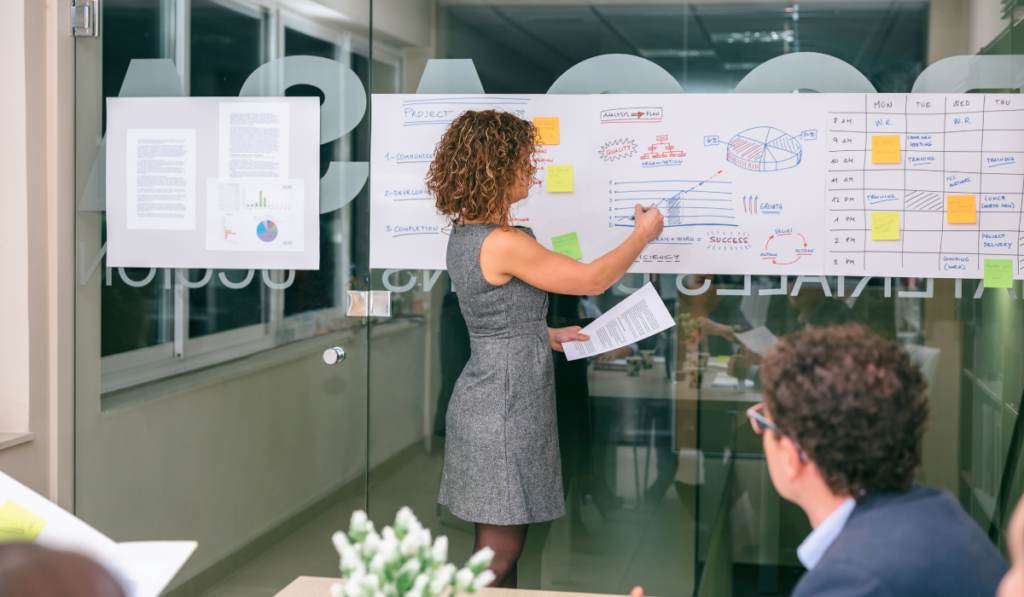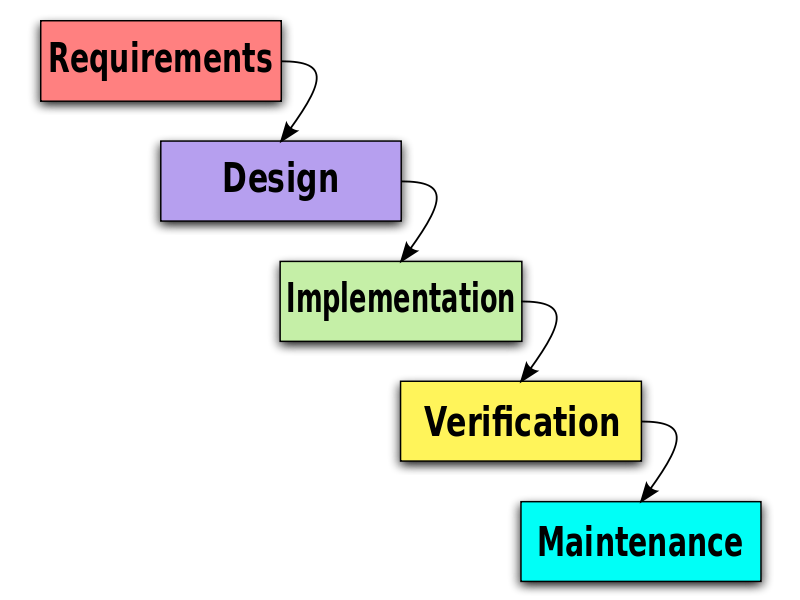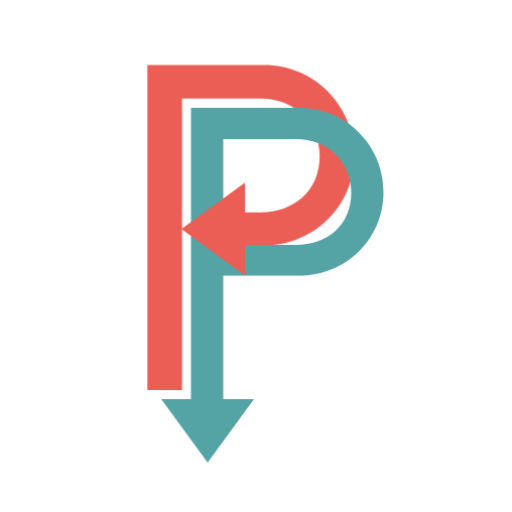If you love a straightforward project management methodology, Waterfall could be your go-to framework. Unlike Agile frameworks, Waterfall is a classic, more rigid alternative. But, it comes with a clear path to follow, even though it doesn’t allow significant changes or going back to square one.
I’ve detailed Waterfall’s characteristics, stages, pros, cons, and main alternatives in today’s article. However, despite the many available project management processes, this one remains one of the most popular choices many companies opt for.
Key Takeaways
- It’s quite a rigid project management framework with a strict set of rules;
- Works excellent for manufacturing companies;
- Waterfall consists of five stages and provides clear action paths, from gathering requirements and documentation to coding and developing the product, testing it, and offering customer support;
- Waterfall’s main alternatives are Agile frameworks, including Kanban, Lean, and Scrum.
Complete Guide to Waterfall Project Management
Let’s see what Waterfall is all about. I’ve also detailed each of its phases. You’re about to find out this PM method’s pros and cons, as well as the projects and companies it’s best suited for.
What It Is

Unlike Agile frameworks, Waterfall has a linear structure. One phase leads to the other, but only after completion. The model’s steps are sequential, and the next one begins when the one before it finishes.
It feels rigid to me since you can’t return to the stages you’ve already completed. On the other hand, if you want a clear path, then Waterfall might be what you need to achieve your project goals.
One thing’s for sure – this PM framework requires a lot of planning. Moreover, all the plan’s elements, including requirements and tasks, must be evident immediately.
Therefore, Waterfall involves plenty of documentation. This has the role of helping all team members understand what they have to do. Therefore, documentation is necessary during every stage of the framework.
Waterfall Framework Stages

Waterfall has five stages:
- Establishing the requirements;
- The design phase;
- The implementation stage;
- Verification;
- Maintenance.
Requirements
Before planning anything and starting the project, team members must gather all the client’s requirements. This is one of the main aspects of the Waterfall framework. The requirements a client may have will determine all the other stages. On the other hand, this first step is essential because, after that, until the project is completed, the team will stop any correspondence with the customer.
The Waterfall approach makes us assume that we can collect all necessary data beforehand and still develop optimal outcomes. The clients or sponsors typically tell their demands directly to the project manager. Each project stage should include several stipulations related to costs, completion timelines, metrics, risks, and other factors.
The document shouldn’t be longer than one page, which means the experts should briefly detail each requirement.
Requirements tasks:
- Conducting feasibility tests;
- Baseline assessments, including cost-benefit analysis;
- Gathering clear demands;
- Information regarding the project’s goals;
- Giving applicable guidelines and documents to all team members.
Design
This stage of the Waterfall framework consists of two sub-phases:
- Physical design;
- Logical design.
Waterfall’s design phase refers to layout creation, data models, and scenario development. Typically, software developers take care of these tasks. The logical part of the design occurs when the team discusses potential solutions and brainstorms different theories. Finally, the physical aspect of this stage occurs when all the ideas developed before are transformed into actual specifications.
Logical design is also known as high-level, whereas the physical part is about software programs and hardware technologies. First, the team establishes the project’s scope. Then, those experts do their best to achieve that goal.
Design tasks:
- Software architecture diagrams;
- Evaluating specifications;
- Estimating how the outcome might look like;
- Choosing the proper technology;
- Designing the necessary systems;
- Hardware requirements and programming language – both of which prepare the coding phase.
Implementation
The software the team uses can be held on a desktop or cloud-based. This is part of the implementation stage when team members produce the actual code by assimilating the design specifications. Implementation is Waterfall’s shortest phase. That’s due to the thorough research and extensive data gathering done in the previous stages.
During implementation, those involved develop new applications while keeping in mind all the requirements stated by the client. They also consider the specifications they came up with during physical design. Some level of testing is also conducted during this phase. The team will only return to the previous stage if serious modifications are needed.
Implementation tasks:
- Coding and developing the final product;
- Integration and other action-oriented tasks.
Verification
Finally, it is time for the client to review the product and speak their mind. That way, customers make sure the outcome meets or exceeds their expectations. Then, further testing occurs, and the team releases the final product for the client to inspect. Before doing that, however, team members ensure there are no errors or flaws.
Moreover, the software they produce should allow an excellent user experience. During this time, programmers revise documentation, requirements, and the already-defined scenarios to run their test cases.
Verification tasks:
- Product quality and functionality testing;
- Fixing system bugs;
- User acceptance test;
- Evaluations and re-evaluations.
Maintenance
This is the final stage of the Waterfall methodology, in which clients might find errors such as system bugs or inadequate features while using the software. The team must solve all those problems, mainly because they appeared during production.
Maintenance is also known as deployment. Project management teams fix all that needs to be solved until their clients are delighted. Furthermore, certain employees will handle any program updates. They are the ones that release updated or upgraded software versions.
Maintenance tasks:
- Customer support;
- Updates;
- Maintaining the system;
- Addressing the client’s needs.
Waterfall Principles

Those project management teams that opt for the Waterfall approach must follow these principles.
Customers Have a Low Level of Involvement
Clients don’t usually participate too much in the Waterfall process. They have active roles in the requirements stage, but after that, the PM employees play the primary role. Throughout the project, customers will still participate in reviews, meetings, and approvals. Besides these milestones, all the other decisions and activities are handled by project management specialists.
The Project Must Have a Sequential Structure
Waterfall has strictly sequential phases. Only after one phase is finished can the team go on to the next. At the same time, going back to modify the things that were done during a previous stage is very expensive. If too many changes are needed, employees might have to start the whole project from its beginning.
The Documentation Must Be Bulletproof
Waterfall relies on the big-bang approach rather than the piecemeal effect. The first methodology links all units at the same time, and the outcome is a complete system. The second approach can be made without an overall strategy. Instead, it focuses on solving issues as they appear, one after the other.
Agile frameworks use big-bang strategies. But these require plenty of documentation full of insightful details upfront. These insights consist of specific skills, timelines, tactics, and deliverables. The team will document and implement all these details throughout the project’s life cycle.
Waterfall Pros
Before discussing Waterfall’s downsides, let’s see its most important benefits. This process is ideal for projects with precise requirements and variable resources in terms of money and time.
Enables a Simple Training
Having a clear plan, Waterfall helps you create a successful outcome even if your project faces unanticipated changes. Project managers can easily include new team members when needed. That’s possible due to the Waterfall’s focus on proper documentation. All stages and tasks are recorded. Hence, new employees can consult the documentation to get up to speed with the project’s current phase.
Makes Projects Easy to Handle
Through Waterfall, projects are easier to manage because of the methodology’s linear structure. All those involved know exactly where the project is whenever they want to find out by following this sequential system. That’s how they can compare their estimated outcome with the actual results.
Instead of trying to lead the entire team at once, managers can focus on the phase at hand and communicate only with those employees that complete those specific tasks. As a result, you can quickly get your project management specialists back on the right track despite delays or personnel changes. That’s doable when the entire project is based on solid documentation.
Helps You Save Money and Time
The Waterfall approach is time-saving and money-saving. For starters, team members can handle their time and deadlines effectively. Once they finish the first stage which requires heavy planning and gathering data, the other steps are quicker. Therefore, stakeholders can also estimate the project’s duration.
Due to thorough preparation, Waterfall projects take less than other alternatives. Hence, they also cost less compared to other frameworks. Therefore, teams will likely come up with successful outcomes on the first try.
Enables Easy Progress Measurements
Tracking progress is easy with this PM framework. Most Waterfall users rely on Gantt charts to visualize their project’s trajectory. The timeline represents the progress bar.
This makes the project clear for everybody, and they can establish the stage they’re in. Moreover, these types of projects have clearly defined milestones. So, it’s simple to see whether or not the project moves forward and falls within the estimated timeline.
Simply put, there will be less guesswork than in other frameworks. From the start to its endpoints, Waterfall processes are straightforward, and all employees know exactly what they must do.
Clear Information Transfer
Due to better documentation, the information transfer becomes clearer. Team members are well-prepared to follow the project’s progress. So, if one specialist must leave the process, another can quickly catch up and become a team member. All these benefits remain viable in cases where:
- The client doesn’t change their requirements too often;
- The projects are clear and short;
- There aren’t any overlapping phases during the project;
- The timeline is clearly specified;
- There’s a stable development environment that comes with the required tools and tactics;
- All human resources involved in the project are adequately trained.
Clear Accountability
With Waterfall frameworks, each team member knows exactly what to do and how to do it. Moreover, they’re prepared to handle unforeseen situations if there’s a delay in the process because of how they manage a task.
Waterfall Cons
Since no strategy is perfect from top to bottom, Waterfall also has a few downsides.
You Can’t Change It
Waterfall projects can’t adapt to change that quickly. As a result, if a roadblock appears along the way, it could significantly impact timelines. This lack of flexibility is one of the most important aspects differentiating Waterfall from Agile frameworks.
Waterfall features highly-structured plans and step-by-step approaches. Still, employees must do their best to check every point of every phase. Otherwise, they might need to start the entire project from scratch again. Returning to the beginning translates into higher expenses, overdue deadlines, and lower morale among employees and customers.
It Needs Plenty of Planning
Waterfall’s first stage is all about planning and documentation. Despite strong documentation, longer projects might not benefit from using Waterfall frameworks. More paperwork could become a liability in those situations. Hence, the planning efforts are extensive. They consist of numerous tactics, including brainstorming sessions and in-depth interviews.
If you miss gathering a particular detail, you might compromise the entire project.
Requires Commitment and Focus
Each stage of the Waterfall methodology requires commitment and focus from all team members. Each employee handles their own specific tasks. That’s another downside that leads to a lack of collaboration.
Therefore, you should double-check everything before going on to the next phase. Missing some elements will determine teams to go back and rework those errors. So, pre-established schedules could get derailed.
You Can’t Handle Several Tasks Simultaneously
Every team member handles specific tasks. Moreover, a PM expert can only work on another task after finishing the previous activity. Agile frameworks allow you to tackle multiple job duties at once. Unfortunately, that’s not the case with Waterfall.
Who Is It for
Waterfall suits those projects that have clearly defined deliverables and specific timelines. Many years ago, companies used Waterfall for their HR projects, CRM systems, and other activities. Nowadays, this approach is better suited for manufacturing companies and less than ideal for IT and app development.
Good for
- Short projects;
- Those in the manufacturing industry;
- Projects that don’t require handling multiple tasks simultaneously;
- Those with a straightforward process and well-defined product;
- Construction projects;
- Healthcare, especially pharmaceuticals;
- Municipalities and local governments.
Not Suitable for
- IT projects
- Projects that can’t be planned upfront;
- Software development.
Best Practices
Here are the things you should consider if you want your Waterfall-based project to be successful.
Take Care of Documentation
You must gather all necessary documentation upfront before starting the project. They must be listed clearly, starting from the project scope. Here’s the list of info you should collect:
- The scope of the project;
- The stakeholders’ expectations;
- Plenty of brainstorming, interviews, and research;
- Team creation.
Focus on Clear Deadlines and Realistic Timelines
Define each phase and the moment the client must be involved throughout the project. You must address certain specifications, such as availability, plans, and assets. Otherwise, those issues might delay the entire process. Deliverables should also have clear deadlines to boost accountability.
Structuring the Project
Defining the framework in as much detail as possible is of crucial importance:
- Collect tasks and assign them;
- Develop schedule.
Collaborate with the Stakeholders
For the sake of the project, team members and project managers should be on the same page as their clients and stakeholders. Longer or larger projects could quickly go off the track. That occurs when there are never-ending demands, changes, opinions, and constantly changing deadlines.
It’s important to remember the project’s objective and return to it whenever problems arise. Stakeholders’ involvement in Waterfall frameworks should be minimal. Moreover, that’s why their requirements are all gathered in the beginning.
Take Your Time to Test Deliverables
It would help to create a plan that allows you enough time to test the outcome. As deadlines approach, many Waterfall processes are rushed. That’s not desirable. Hence, it would be best if you came up with realistic timelines. In other words, teams should use more than just small samples to test the final product.
Monitor Outcomes Regularly
There are effective ways in which you can keep track of your progress:
- Assign monitoring tasks to smaller teams, relying on the Gantt chart;
- Monitor daily progress to check if the project goes as planned;
- Handle workload and resources with care. Avoid bottlenecks by creating a balanced workload through resource allocation;
- Keep your stakeholders in the loop by reporting to them regularly;
- Avoid any errors or delays by testing and providing deliverables extensively.
Main Alternatives to Waterfall

There are many other options that companies could consider instead of Waterfall. I’ve listed below some of the most popular Waterfall alternatives.
Lean
Lean, like Waterfall, is great for manufacturing industries. However, Lean was created especially for those types of companies. It’s an agile methodology.
- Lean is more flexible and less rigid than Waterfall;
- Lean focuses on creating smaller subsets of features;
- It’s adaptable to changes, having an iterative approach.
Kanban
Kanban is very popular lately due to its visualization approach. Unlike Waterfall, Kanban tries to balance customer demand.
- Kanban is ideal for projects with quick iterations;
- It features boosted transparency;
- Prioritizes critical tasks and allows employees to handle multiple chores simultaneously.
Scrum
Scrum is another agile methodology used by numerous companies.
- Focuses on incremental steps;
- Relies on an adaptive strategy;
- Allows learning loops;
- Quick and regular feedback;
- Works with cross-functional teams.
FAQs
Answer: That depends on what your project is about and what your goals are. Agile frameworks are more flexible and better for longer projects that could face uncertainties. Waterfall provides clear action steps, but it’s rigid yet more predictable. Agile is great for software development, whereas Waterfall works better for manufacturing businesses.
Answer: Waterfall is a clear and straightforward process. This means you can easily catch any design error before it damages the outcome. Moreover, teams can accurately estimate a project’s total cost and split the process into smaller and easier-to-achieve milestones.
Answer: If you want to take your Waterfall project to the next level, you should create strong plans based on pre-created templates. Also, sharing project details with stakeholders in real-time will boost their engagement. In addition, optimization through Gantt charts is a must to establish the project’s schedule. Finally, automation and integrations lead to better cross-departmental collaboration.
Answer: First, you must establish the project’s parameters, like features, customer base, budget, and estimated financial earnings. Then comes the project’s expectations which refer to workload, task assignments, timelines, and more. Collecting the documents and starting the project are the following two duties you should handle. That’s how you kickstart a Waterfall project.
Bottom Line
Waterfall is a traditional framework with a long history in project management. It has helped numerous companies develop new products. Its approach delivers rigor and structure. However, not every type of project will benefit in the same way from this methodology. If your project fits the aspects I’ve detailed above, you could try Waterfall.
Otherwise, you might consider a hybrid strategy combining Waterfall and Agile phases. This will boost the project’s flexibility. Ensure the Waterfall framework supports your strategy and falls within your deadline and budget before deciding to use it.
Sources
- Forbes
- https://economictimes.indiatimes.com/definition/waterfall-model
- https://www.techtarget.com/searchsoftwarequality/definition/waterfall-model
- https://www.google.ro/books/edition/Waterfall_Project_Management_The_Ultimat/DkJRvQEACAAJ?hl=en
- https://www.forbes.com/advisor/business/agile-vs-waterfall-methodology/
- https://harappa.education/harappa-diaries/advantages-and-disadvantages-of-waterfall-model/
- https://www.projectmanagement.ie/blog/waterfall-methodology/
- https://kanbanzone.com/2021/waterfall-model-for-project-management/
- https://www.educba.com/waterfall-model/
- https://blog.hubspot.com/marketing/waterfall-methodology
- https://www.javatpoint.com/software-engineering-waterfall-model

Alexandra is a passionate digital strategist who loves project management tools and principles. As a content writer, Alexandra has created many in-depth guides on e-commerce, digital marketing, and project management tools and is here to help the Projects Pivot readers learn more about managing projects and the digital tools that we use!

